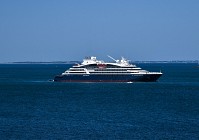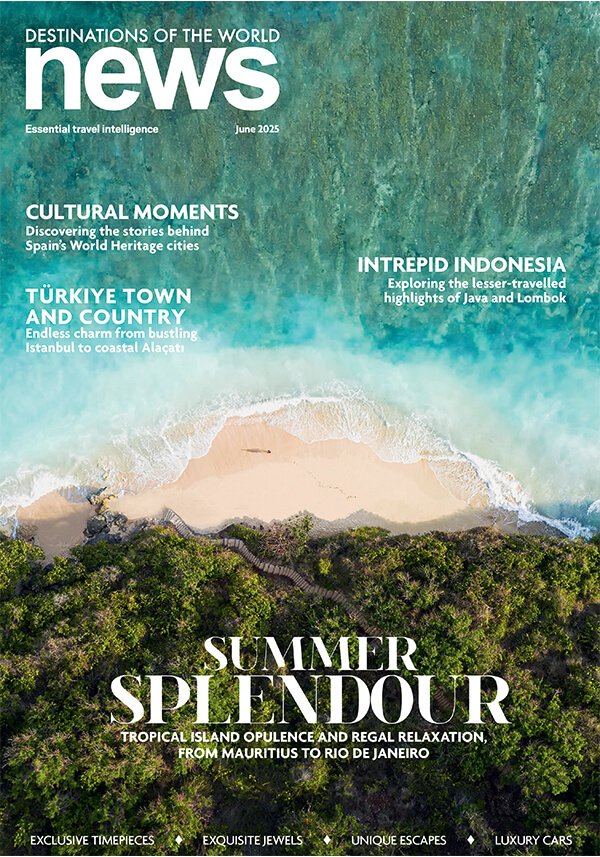“Sicilian wines encompass the spirit of 20 civilisations” claims wine buff Bruno Pastera. The same is true of the food. If Sicily were a pizza it would be thick-crust. Each layer adds another exotic flavour, another spicy civilisation. Blame the early Arab settlers, who spiced up Sicilian cuisine, introducing citrus fruits and cloying sweets. Blame the Sicilian nuns, closeted away in their convents, with baking cakes their only escape from prayer. Novice nuns made marzipan concoctions – and the tradition survives. The naughty pastries include `virgins’ breasts’ and `chancellors’ buttocks.’
Conveniently, a tour of south-eastern Sicily’s best baroque towns soon turns into a food safari. This moveable feast links Ragusa, Modica and Noto, a cluster of tawny-coloured baroque towns rebuilt after the 1693 earthquake. In Sicily, the sense of baroque embraces architecture and food. It’s a way of seeing the world. As writer Stefano Malatesta says: “Everything’s baroque, excessive, and eccentric: look at the lavish, multi-coloured food, the decadent nobles, the elaborate courtesy.”
Known as the Val di Noto, Sicily’s most flourishing region discovered tourism late. Centred on Ragusa, this “island within an island” has long lived off the land. Wherever you look are well-tended olive groves, gnarled carob trees, dry-stone walls and low-slung farmhouses. The rolling hills lead to prosperous, butter-yellow towns where comfort eating and hearty inns are slowly making way for Michelin-starred restaurants. Ragusa is noted for both its gourmet restaurants and its foodie inns. But few can resist the ice creams in Gelati Divini. On the main square of Ragusa Ibla, you can view the baroque wedding-cake cathedral while sampling gelato flavoured with local ricotta, lemon granita, carobs or olive oil.
Steeply-stacked Modica boasts Italy’s best chocolate festival, the autumnal Chocobarocco, with tastings in shops and gourmet inns. Antica Dolceria Bonajuto is chocoholic heaven. The shop is famous for a granular chocolate first made by the Aztecs, introduced to Sicily by sixteenth-century Spanish rulers. The Aztec-style vanilla and hot pepper versions are not for the faint-hearted. In Modica, sweet pastries combine chocolate and meat in a surprisingly tasty combination called I’mpanatigghi.
Golden-hued Noto is the most blatantly theatrical town, with a baroque cuisine to match. Here, Caffe Sicilia is Sicily’s most celebrated pastry-shop. Sicilians in need of a sugar fix eat the cloyingly sweet cassata, made with ricotta and candied fruit. The rest of us tend to go for torrone, nougat infused with local honey and almonds. In summer, the saffron ice cream is the perfect antidote to dizziness induced by the sight of so many billowing baroque balconies.
The taste of Sicily embraces lemony wild fennel, roasted tomatoes, ricotta pastries, toasted almonds, anchovies and swordfish. Rustic feasts includes fennel, blood orange and anchovy salad, or piquant Ragusano cheese, washed down with peachy Cerasuola wine or punchy Nero d’Avola. Wine country stretches north and west of Ragusa, with the Chiaramonte slopes dotted with olive groves as well as vineyards.
South-eastern Sicily is made for leisurely lunches, wine-tasting and wandering. Add baroque architecture and it becomes a true feast for the senses. You can even snooze in baroque boutique hotels. Luckily, Sicilian hospitality is legendary, as cloyingly sweet as the local cassata cake.
Four diverse restaurants offering the finest cooking in south-eastern Sicily:
Il Duomo

This Michelin-starred spot is renowned for its creative cuisine and is still the best-loved gourmet haunt in Sicily. Presided over by celebrity chef Ciccio Sultano, the restaurant is part of Palazzo Cosentini, a handsome mansion sculpted with baroque balconies. As in much of Ragusa Ibla, the palaces are carved with a parade of mythical monsters. In baroque south-eastern Sicily, less is never more, especially not in Il Duomo. The setting reflects the chef’s penchant for baroque: “My cooking is voluptuously baroque because I am baroque - I never remove anything from my recipes but just pile on more.” Inside, a series of private parlours creates a sense of intimacy that counterpoints the baroque food. Go the whole hog with an extravagant tasting menu. This restlessly inventive chef is influenced by molecular cuisine but not enslaved by it. The balanced dishes depend on local produce ranging from pistachios to fennel and almonds. Celebrity chef Giorgio Locatelli loves dishes like Ragusano cheese gnocchi to chargrilled vegetables and red prawns. For dessert, taste Sultano’s interpretation of cannoli, a rich, ricotta-filled Sicilian classic.
Via Capitano Bocchieri 31, Ragusa Ibla, +39 0932 651265; www.cicciosultano.it
Locanda don Serafino

This may be Sicily’s most seductive restaurant. Nowhere else combines the loveliest town, the most exquisite setting and the most good-looking, Michelin-starred chef with the best sense of Sicily on a plate. Set in the moody Ragusa Ibla, where dwellings have routinely been carved out of the rocks, the restaurant is burrowed into the basement of a Sicilian mansion, and spills onto a charming terrace for summer dining. Chef Vincenzo Candiano serves up delectable dishes that bridge the gap between sleek fine dining and superior regional cuisine. Signature dishes include spaghetti with sea urchins and cuttlefish or stuffed roast quail with scented herbs. A popular dessert fuses Ragusano cheese with thyme-scented honey. Ragusa is on the tourist trail but, given the gourmet cuisine and great wine-pairings, the Locanda represents good value, as does Il Duomo. If planning to linger over dinner, then book a bed at Don Serafino’s boutique hotel. If impressed Locanda and keen on sampling some beach life, consider lunch at the simpler sister restaurant in neighbouring Marina di Ragusa.
Giovanni Ottaviano 13, Ragusa Ibla, +39 0932 248778; www.locandadonserafino.it
Locanda Gulfi

For a taste of rural Sicily beyond Ragusa choose this wine estate and gourmet restaurant. Make the most of it by following an organic wine-tasting before lunch, or even a cookery class. The winery is set in the Chiaramonte and Monti Iblei hills, about half an hour from Ragusa. Award-winning Chef Giuseppe Causarano comes from neighbouring Modica, a foodie hotspot, so expect Sicilian dishes with a twist. Treats include grilled seafood on smoked aubergine; octopus with chickpeas; wild fennel asparagus and seafood risotto; and tortelli pasta with Ragusano cheese and Nerojbleo Gulfi wine. The estate supports Slow Food, from cheeses and salami to Avola almonds and hand-milled bread perfect for dipping into aromatic Gulfi olive oil. Sicily was the bread basket of the Mediterranean world and has never lost its love of artisanal breads. An old olive press even greets visitors in the courtyard. Staples of Sicilian peasant cuisine are given a twist (so onion soup with tuna flakes). Naturally, dishes are paired with estate wines. The pastry chef, who trained under Giorgio Locatelli, produces sweet-and-savoury concoctions, such as ricotta-filled cannolo with lemon sorbet and pistachio.
Contrada Patria, Chiaramonte Gulfi, +39 0932 928081; www.locandagulfi.it
La Madia

If travelling between Ragusa and Agrigento, then make a detour to Sicily’s most acclaimed restaurant. Only visit shabby Licata, a one-horse town, for La Madia itself. It’s a trek but worth it for a master class in passionate Sicilian cooking rather than soulless precision. Chef Pino Cuttaia wears his two Michelin stars lightly and even takes your order himself in the warm Mediterranean dining room. The patron-chef conjures up bold but unfussy dishes in generous portions. He describes his cuisine as “an interpretation of Sicilian classics,” ranging from couscous to cannoli – even elebrity chef Giorgio Locatelli appreciates the flair. The smoked cod with pine-nuts melts in the mouth, while other signature dishes include a whipped version of buffalo mozzarella along with Octopus on the Rocks and baby squid served on a bed of chickpea purée. Also expect sophisticated interpretations of Sicilian street food, such as the arancino, a fried rice ball, but here served in a sauce of red mullet and wild fennel. Reflecting a relaxed approach to fine dining, Cuttaia does not do wine pairings but matches the wine to the meal as a whole.
Corso Filippo Re Capriata 22, Licata, +39 0922 771443; www.ristorantelamadia.it










